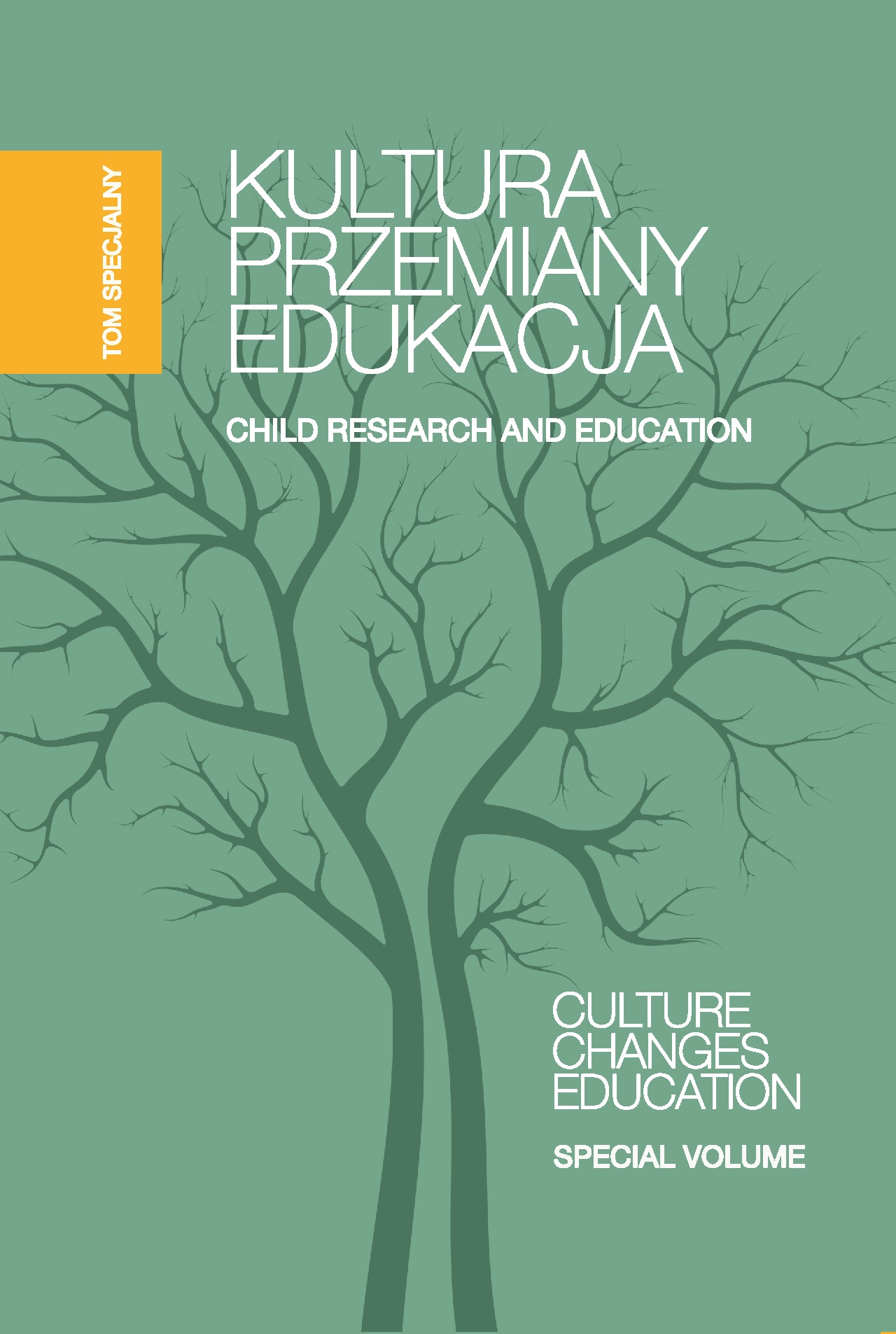Developing Creativity in the Higher Education on the Relationship between Community Art and Whole Child Approach
DOI:
https://doi.org/10.15584/kpe.spec.crae.2024.19Keywords:
creativity, community art, whole child approach, teacher educationAbstract
Under the umbrella of the VUCA-world and growing international competition creativity plays a more important role in higher education. In this context, divergent thinking, fluency, flexibility, problem-sensitiveness and originality are key factors for work, life, and literacy. In the first part of the article we will discuss the philosophical phenomena of this process, which comes from John Dewey’s ’learning by doing’ principle. In fact, rethinking higher education comes to the front in the 21st century, changing teaching education in order to develop creativity with various innovative ways. In the second part of the article Visual Arts, especially Community Art, will be in focus. This promotes communication, collaboration, critical thinking and problem-solving, creativity and innovation, especially project-based learning via Totem Project, which was implemented at J. Selye University from November to December 2022. The aim of the project was community building and creativity development. Building a community is based on collaboration amongst students and teachers (the project had 50 members in total and consisted of 100 working hours) in order to develop creativity, team-building, and collaborative professionalism via sharing aims and expectations, building community and trust, respect and listening. The Totem Project started to map prior knowledge on community in order to develop engagement and creativity at three levels: individual, team, and organizational levels. Finally, at the end of the paper, conclusions will underline some open dilemmas and questions.
Downloads
References
Báthory Z., Tanulók, iskolák, különbségek, OKKER Oktatási Kiadó, Budapest 2000.
Congdon K.G., Blandy D. & Bolin P.E., Histories of community-based art education, Reston, VA: National Art Education Association, 2001.
Comenius J.A., Nagy oktatástan, Akadémiai Kiadó, Budapest 1953.
Csikszentmihalyi M., Creativity: The Psychology of Discovery and Invention, New York, NY: Harper Perennial, 1996.
Dewey J., Experience and Education, Collier Books, New York 1938, 1963.
Florida R., The Rise of the Creative Class: And How it’s Transforming Work, Leisure, Community and Everyday Life, New York, NY: Basic Books, 2002.
Florida R.L., The Rise of the Creative Class, Revisited, New York, NY: Basic Books, 2012.
Guilford J.P., Creativity, “American Psychologist” 1950, 5(9), 444–454.
Hanushek E.A., The Economic Value of Improved Schools, Hoover Institution, Stanford University, 2019, https://www.niet.org/assets/ResearchAndPolicyResources/974a262a85/eric-hanushek-the-economicvalue-of-improved-schools.pdf.
Hanushek E.A., Woessmann L., Do Better Schools Lead to More Growth? Cognitive Skills, Economic Outcomes, and Causation, Working Paper No. 14633, Cambridge, MA: National Bureau of Economic Research, 2009.
Hanushek E.A., Woessmann L., The Knowledge Capital of Nations: Education and the Economics of Growth, Cambridge: MIT Press, 2015.
Hanushek E.A., Woessmann L., Knowledge capital, growth, and the East Asian miracle, “Science” 2016, 351(6271).
Hanushek E.A., Woessmann L., Universal Basic Skills: What Countries Stand to Gain, OECD Publishing, Paris 2015.
Kaufman J.C., Beghetto R.A., Beyond big and little: The four c model of creativity,”Review of General Psychology”, 2009,13(1), 1–12.
Kolb D.A., Experiential Learning: Experience as the Source of Learning and Development, FT Press, 2014.
Langdon P., Community art education: Issues for teacher training [in:] Actes du Colloque sur la Recherche en Enseignement des Arts Visuels, eds. F. Gagnon-Bourget, P. Gosselin, Montréal, Canada: CRÉA Éditions, 1996.
Lucas B., Creative School Leadership, Perth: FORM, 2021.
Maringe F., Foskett N., Introduction: Globalization and Universities [in:] Globalization and Internationalisation in Higher Education, eds. F. Maringe & N. Foskett, Continuum International Publishing Group, London 2012, 1–15.
Mészáros T., Nagyová Cs., Közösség és művészet a Selye János Egyetem Tanárképző Karán [online] [in:] Katedra: szlovákiai magyar pedagógusok és szülők lapja, Dunajská Streda: Nadácia Katedra, 2023, 30, 8, pp. 33–35 [in print] [online]. ISSN 1335-6445. ISSN (online) 2729-9066. [in Hungary].
Mészáros T., Vass V., The links between a changed vision of learning and project-based teaching [in:] The State, Problems, and Needs of the Modern Education Community : The 28th International Scientific Conference “Educational Research and School Practice”, eds. J. Stevanović, D. Gundogan, B. Ranđelović, Belgrade, Serbia, Institute for Educational Research, 2022, pp. 20–28.
Rhodes M., An analysis of creativity, Phi Delta Kappan, 1961, 42, pp. 305–310.
Richards R., Millennium as opportunity: Chaos, creativity, and Guilford’s structure of intellect model, “Creativity Research Journal” 2001, 13(3–4), pp. 249–265.
Slade S. & Griffith D., A whole child approach to student success, “KEDI Journal of Educational Policy” 2013.
Sinner A., Levesque M., Vaughan K., Szabad-Smyth L., Garnet D. & Fitch S., Reviewing an archive of practice: The historical unfolding of community art education, “Canadian Review of Art Education” 2012, 39, pp. 24–45.
Sternberg R.J. & Lubart T.I., The concept of creativity: Prospects and paradigms [in:] Handbook of Creativity, ed. R.J. Sternberg, Cambridge, MA: Cambridge University Press, 1999.
Vass V., A deklaratív és a procedurális tudás összefüggései a tudás transzferálhatósági folyamatában [in:] Interdiszciplináris pedagógia múlt és jövő között: a XI. Kiss Árpád Emlékkonferencia előadásainak szerkesztett változata Debrecen, Magyarország, eds. A. Buda, E. Kiss, Debreceni Egyetem Neveléstudományok Intézete 2020, 35–52.
Vass V., Kiss F., The Role of Competency Development in the Implementation of Portfolio-Based Education in Higher Education [in:] Visions and Concepts for Education 4.0. ICBL 2020: Proceedings of the 9th International Conference on Interactive Collaborative and Blended Learning (ICBL2020), eds. M.E. Auer, D. Centea, Cham, Switzerland, Springer International Publishing 2020, pp. 42–48.
Whiting K., These are the top 10 job skills of tomorrow – and how long it takes to learn them, World Economic Forum 21 Oct 2020, https://www.weforum.org/agenda/2020/10/top-10-work-skills-of-tomorrow-how-long-it-takes-to-learn-them/.web 1, (n.a.), Community Art, https://www.tate.org.uk/art/art-terms/c/community-art.web 2, Oxford English Dictionary, s.v. “totem (n.), sense 1.a,” September 2023, https://doi.org/10.1093/OED/2413715247.
Downloads
Published
How to Cite
Issue
Section
License
Copyright (c) 2024 KULTURA – PRZEMIANY – EDUKACJA

This work is licensed under a Creative Commons Attribution-NoDerivatives 4.0 International License.


